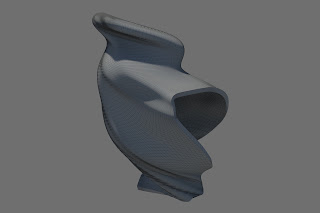"'Versioning' is an operative term meant to describe a recent, significant shift in the way architects and designers are using technology to expand, in time as well as in territory, the potential effects of design in our world. More importantly I find, however, is the idea of iteration. The fact that with new progress in technology, we have the ability to not only explore new forms, but generate iterations of these forms extremely quickly. The example was given of the development of the many different types of
Fins and Rudders. A beneficial act to see and compare several different ideas side by side. However, extremely time consuming. Technology has allowed us to stream line this process, using pre-defined conditions to generate increasingly different forms. In a sense an excel sheet for form/ design. Not only has this technology allowed use to generate this iterations infinitely quicker, it has also allowed us to explore multiple influences at the same time, rather than a linear process.
The question was brought up, and something that I personally wonder, is with this increase in technology, what use are we as designers if a computer is able to generate so many so quickly. "This is not a call to replace the human act of design with algorithms, but a critical search for a common language between design and execution." The idea that this iteration is simply a tool for design. Allowing the designer to explore extremely large variations of a particular design, and to explore conditions normally unobtainable without technology. Remembering back to the lecture we had a couple weeks ago regarding NADAA. They were able to use a series of animations to quickly explore a wall form. I believe that this approach is exactly the strength of this technology. Empowering the designer to iterate quickly and explore hundreds of possibilities.
There have been ideas of the development of this technology even further to a point where actual floor plans/ construction documents would be able to be seamlessly developed and iterated on. If such a process was to become streamlined, and as architects, what role would we be able to play? Will a computer ever really be able to make design decisions? Is this something we should be scared of, or perhaps open to adapt too?













